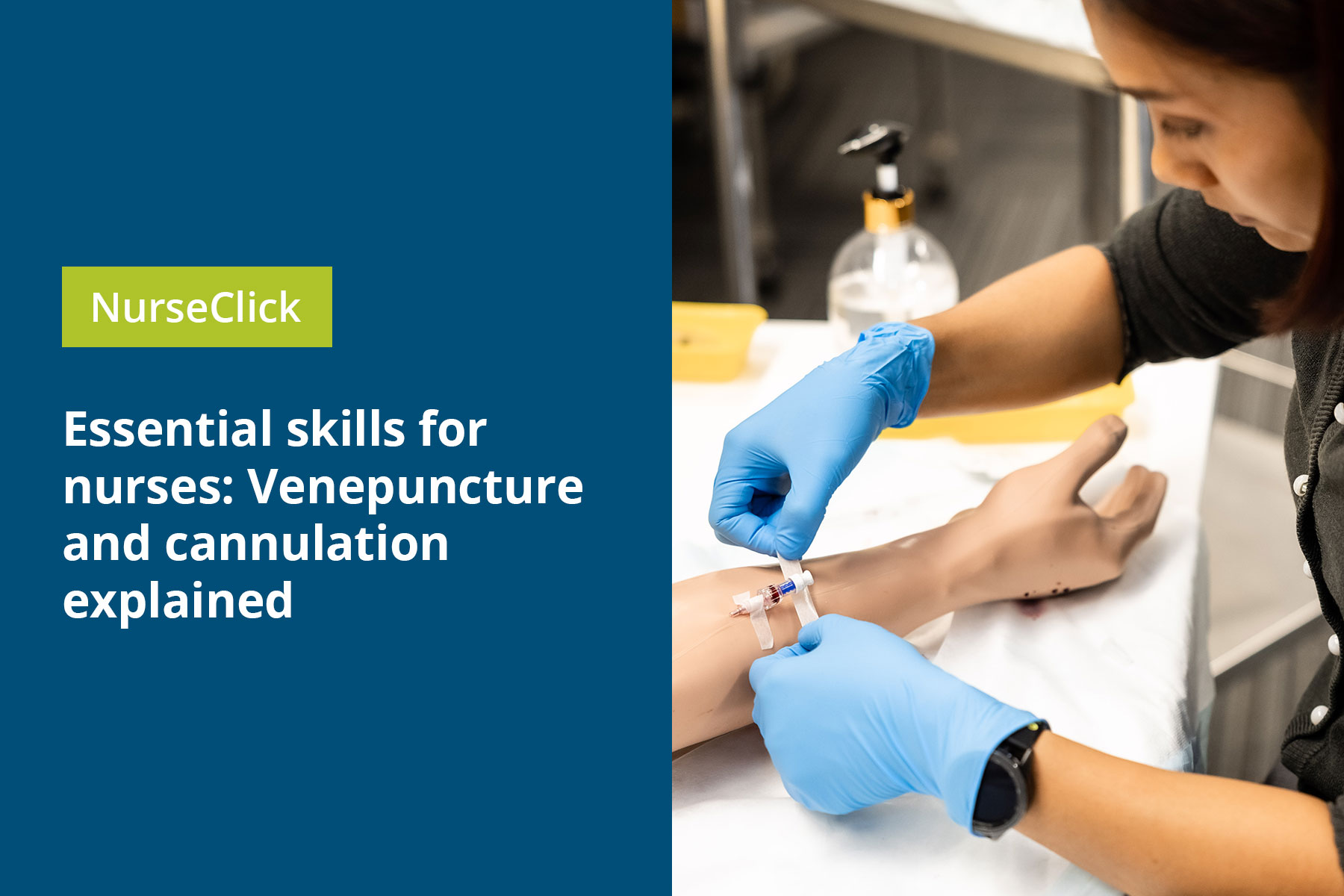Venepuncture and cannulation are essential healthcare procedures, crucial for administering medications, fluids, and taking blood samples. Given that nearly half of pediatric patients and a third of adults experience challenging intravenous access, proficiency in these techniques extends beyond mere skill—it requires a deep understanding of vein selection.
By recognising and addressing these complexities, healthcare professionals can enhance their methods, ensuring both the comfort and safety of patients while improving the likelihood of successful access on the first attempt.
In this comprehensive guide, we will explore effective strategies for selecting the right vein and navigating potential challenges, aiming to optimise both the outcome and the patient experience. Don’t forget to bookmark this article for quick reference whenever you need guidance on venepuncture and cannulation!
In this article:
Choosing the right vein: What to avoid
It is important to recognise veins that may increase the risk of complications. Here are the key areas and conditions to avoid:
Previous intravenous infiltration
Selecting veins below a prior infiltration site can lead to complications due to compromised vessel integrity.
Phlebitis and inflammation
Veins close to inflamed regions, as well as those in the upper inner aspects of the arm and wrist, are susceptible to phlebitis and infiltration due to their thin walls.
AV fistula
Vessels in arms with arteriovenous fistulas, crucial for dialysis, should be preserved to prevent damage to essential vascular access.
Compromised limb circulation
Stroke-affected limbs with vascular weaknesses and lower limbs with a heightened thrombosis risk due to slow venous flow are suboptimal. Furthermore, the lower limbs are particularly contraindicated in diabetic patients due to the risk of inflammation and tissue necrosis.
Damaged veins
Vessels showing signs of sclerosis, occlusion, or structural damage present a higher complication risk.
Skin conditions
Areas of skin that are burned, infected, or scarred present heightened infection risks and challenges to venepuncture.
Bruising
Vessels adjacent to bruised tissue are more likely to suffer additional trauma, affecting the integrity of blood samples.
Upper inner arm and wrist veins
Due to their propensity for bruising and their delicate nature, these veins should only be considered as alternative sites if other options are unavailable.
Factors contributing to difficult venous access
Securing venous access can be a complex task due to a multitude of contributing factors, from patient-specific conditions to anatomical variances.
Understanding these elements is crucial for healthcare providers to anticipate potential issues and make informed decisions.
Disease and condition impact
Certain diseases directly compromise vessel health. Diabetes, for instance, is known to affect the vessel’s structural integrity, often leading to more challenging venous access.
Historical accessibility
Patients with a record of poor vein accessibility or those who have undergone multiple failed cannulation attempts tend to have less viable venous options, requiring more precision and care during insertion.
Visual obstructions
Factors like excessive hair, prominent scars, or tattoos can obscure clear visualisation of the veins. It’s important to note that henna tattoos can be particularly problematic due to their dense pigmentation.
Patient age
Age plays a significant role in venous access difficulty. In children, the presence of adipose tissue and small vein size can hinder palpation and visualisation. For the elderly, veins may lose elasticity and recoil, becoming more prone to collapse upon cannulation.
Body composition
Obesity can lead to deeper vein placement, making them harder to locate, while malnourishment might result in more fragile veins. Dehydration also leads to reduced vein turgor, complicating intravenous access.
Medication history
A history of treatment with certain medications, such as anticoagulants or corticosteroids, can affect venous access by altering the vessel walls or surrounding tissues.
Lifestyle factors
Intravenous drug use often leads to damaged or sclerosed veins, posing significant challenges to venous cannulation.
Cannulation site selection: Dos and Don'ts
Choosing the appropriate site for cannulation is critical to ensure effective treatment and patient comfort. Following these guidelines will help optimise outcomes and minimise complications.
Do
Conduct a thorough examination
Evaluate both arms carefully before choosing a cannulation site to find the most suitable vein.
Use the non-dominant arm
This minimises disruption to the patient’s daily activities and avoids discomfort.
Select the most distal site first
Start with the most accessible vein available in the lower parts of the arm to preserve higher veins for any future needs.
Rotate cannulation sites
Alternate between arms for each procedure to reduce the risk of vein overuse and complications.
Don’t
Cannulate areas of flexion
Veins in joint areas like the elbows are more prone to movement, which can dislodge the cannula and cause discomfort or complications.
Choose hands or joints in arthritic patients
Cannulating these areas can exacerbate pain and discomfort in individuals with arthritis.
Reuse previous cannulation sites
Using fresh sites reduces the risk of infection and vein trauma, leading to higher success rates.
Select areas with poor venous return or lymphoedema
Cannulating these sites can increase the likelihood of complications.
Use sites near wounds, dressings, or recent surgical areas
Targeting these areas increases the risk of infection and should be avoided.
Mastering vein selection and cannulation is crucial for healthcare professionals to ensure patient comfort, safety, and procedural success. By understanding which veins to avoid, recognising factors contributing to difficult access, and following proper site selection guidelines, practitioners can enhance patient care and minimise complications during venepuncture and cannulation procedures.
If you’re looking to enhance your clinical skills in this area, the Australian College of Nursing’s Venepuncture and Cannulation CPD course offers a comprehensive blend of theory and practical expertise. The course consists of a two-hour online preparation module followed by a four-hour interactive workshop. You’ll learn everything from legal and professional standards, to insertion techniques and maintenance practices.
By Christine Collins MACN
Christine considers herself a lifelong learner with a passion for educating through mentoring, and the development of practical, equitable learning resources. Christine has a focus on adult learning through leading and training future educators in the nursing profession. Her priority is to help nurses put theory into clinical practice. It is Christine’s goal to equip clinical nurses with the skills they need through collaboration, respect and empowerment.

By Jenat Sakayanathan
Jenat is a critical care nurse who is very passionate about nursing. Clinically, she has experience working in various settings including Emergency, ICU, Rehabilitation and Community in both public and private health sectors. Academically, she holds a Bachelor of Health Science and Master of Nursing and a Masters in Critical Care Nursing. Jenat believes teaching is a process that facilitates acquisition and modification of knowledge that enables nurses to become critical thinkers. She thrives to create a supportive environment for nurses to learn and is passionate about empowering nurses to provide care that is of the highest quality.







